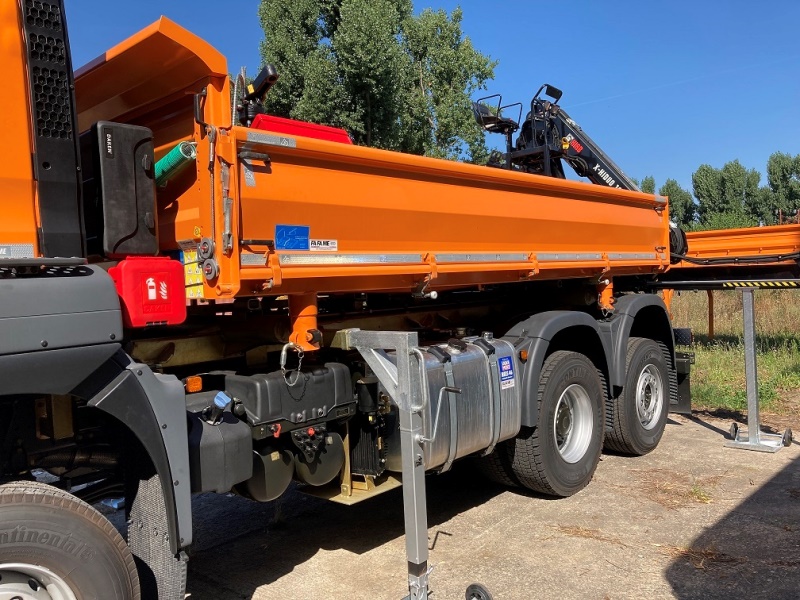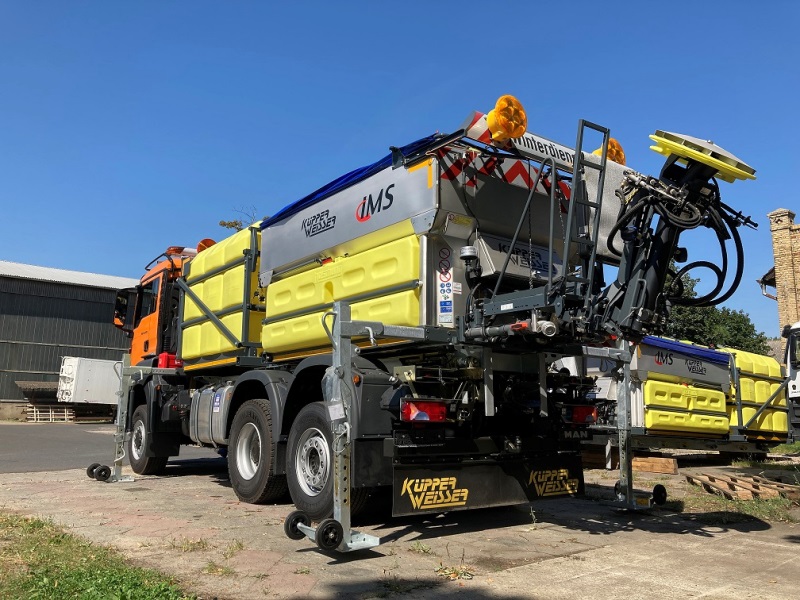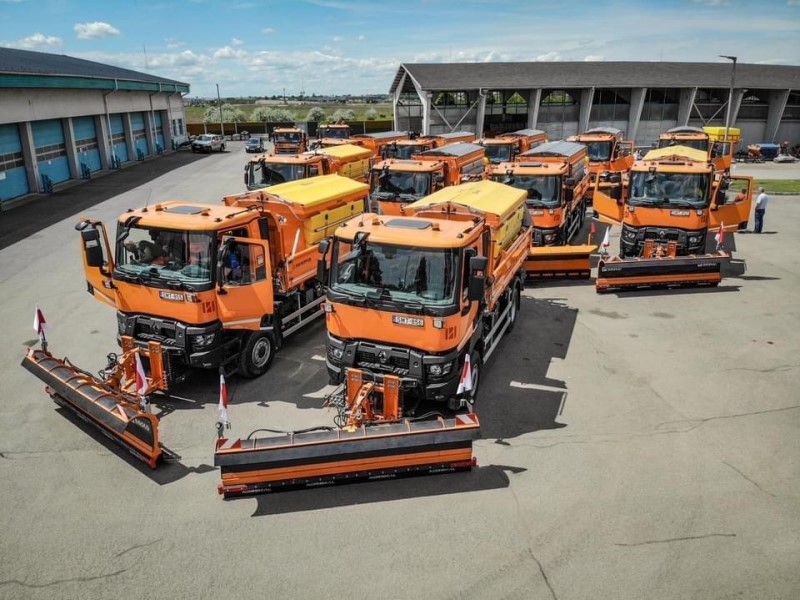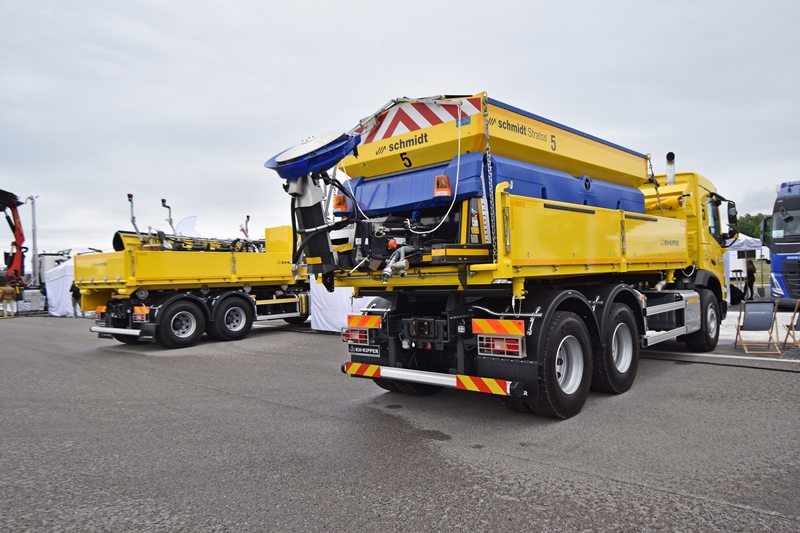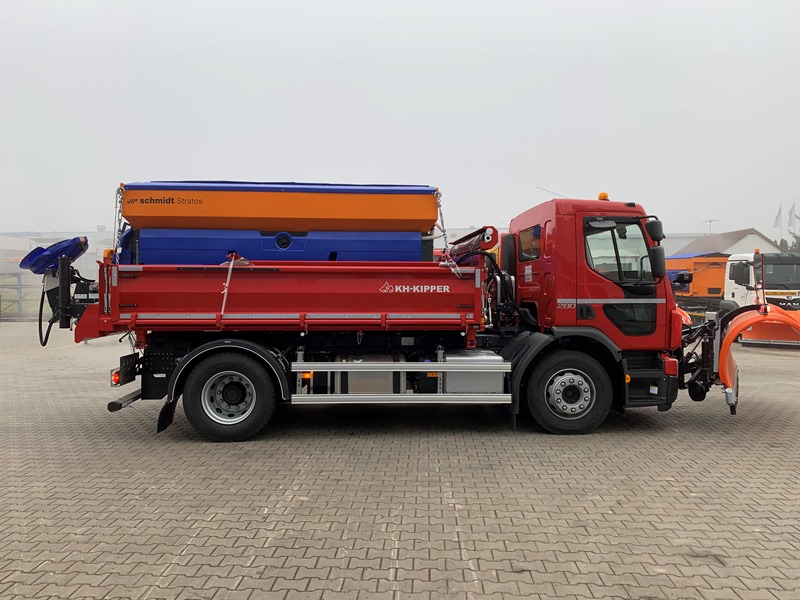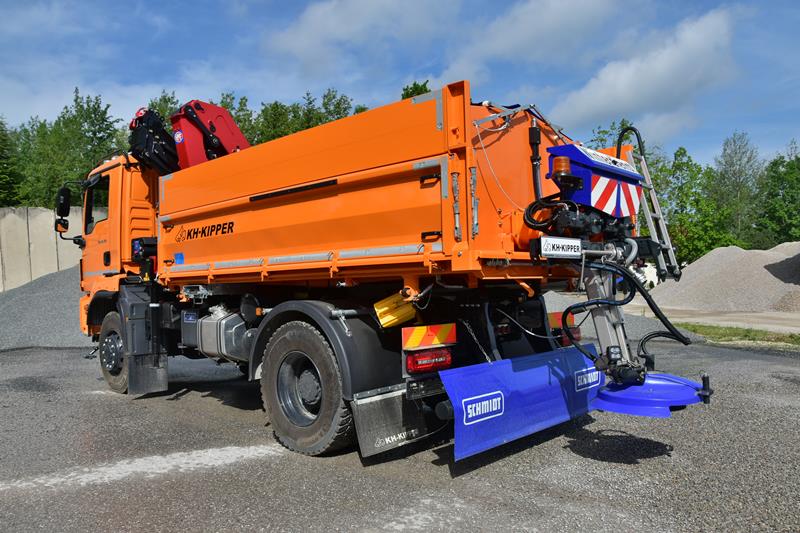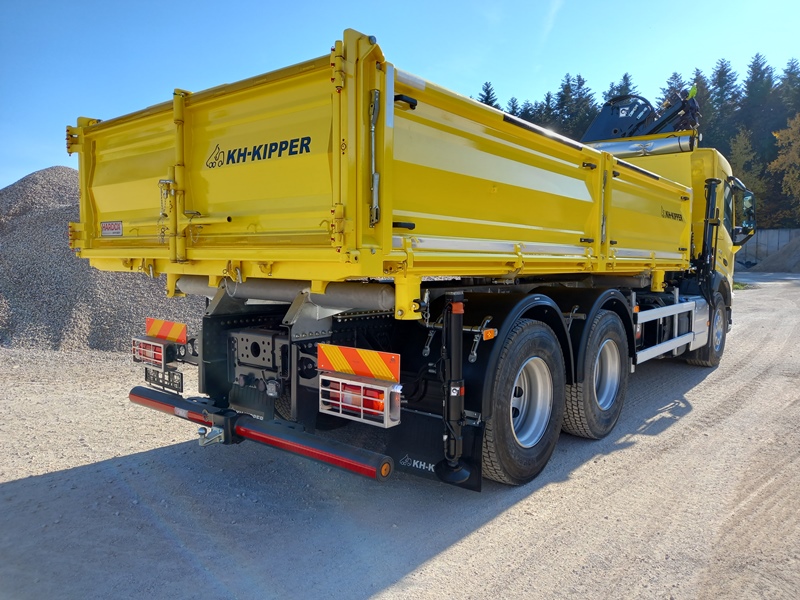Winter is coming
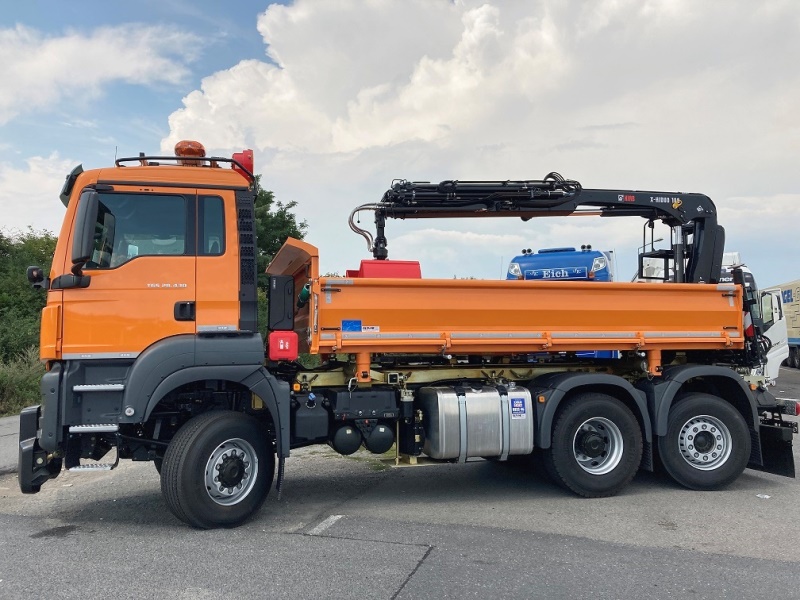
Each type of task performed is different, which is why KH-KIPPER puts great emphasis on adapting the product to the individual needs of users. The company’s offer includes not only solutions for the construction and mining industries, but also for the energy and municipal sectors. KH-KIPPER bodies are intended for winter maintenance of roads and highways, outside the winter season they are used to transport loose and palletized materials necessary for their renovation. Such tipper trucks are additionally adapted to install a front and side plough.
W3F three-way tipping body
The W3F three-way tipping body, optionally equipped with a snow plough, is an excellent carrier for salt spreaders in winter. In summer, it is used for ongoing maintenance of road infrastructure.
The body has top and bottom hinges as standard. This enables safe and quick unloading of bulk materials after opening the bottom locks and unloading of pallets when opening the side walls downwards. The spring compensation located at the front of the body makes it easier to lower and close the side walls. After dismantling the sides and posts, a platform is created for transporting a salt spreader, plough, containers or oversized loads. Thanks to the appropriate internal width, it is possible to transport pallets in two rows loaded next to each other.
Steps on the side walls make it easier to climb onto the body. Handles located on the floor enable safe mounting of the salt spreader or materials on pallets.
Covering the side board opening mechanism protects against backfilling during unloading and unfavorable weather conditions. This eliminates losses related to unnecessary repairs and costly downtime of the vehicle.
Additional anti-corrosion protection in the form of a zinc primer protects the steel elements of the body against the adverse effects of salt and chemicals in winter.
There is a grid on the front wall that protects the cabin during loading and driving.
Thanks to their lightweight construction, vehicles with W3F bodies have a relatively high load capacity. The floor of the body is made of Swedish HARDOX steel, and the sides are made of high-quality construction steel, which gives the body adequate strength and extends its service life.
Optionally, steel mesh extensions are available, which are perfect for collecting bulky waste, e.g. leaves, branches, grass or selective waste collection.
W3A three-way tipping body
The floor of the body is made of HARDOX wear-resistant steel, and the side and rear walls are made of aluminum. Aluminum is light and corrosion resistant. The side boards on both sides are divided into two sections with bottom hinges, and the rear board additionally has a top hinge. After dismantling the side and corner posts, we obtain a flat platform. The platform can carry a salt spreader, a long highway plow, work machines or large prefabricated elements. Loads are attached using towing points located on the floor.
The internal dimensions of the body allow the transport of materials on pallets placed in two rows next to each other.
There is a roof on the raised front wall to protect the cabin.
The Brigade reversing camera makes maneuvering easier, especially in winter when there is a salt spreader on the body. The driver sees blind zones on the monitor in the cabin. The live signal shows everything in the camera’s field of view, including people and obstacles.
Exchangeable system
Municipal companies strive to ensure that the entire road infrastructure maintenance process is carried out smoothly and efficiently from an economic point of view. Therefore, they are looking for the most cost-effective solutions. This task is coped with the so-called exchangeable system, i.e. a special system with a body that can be replaced with a salt spreader or other body. The advantage of this solution is the ability to use one vehicle all year round for various transport tasks.
Replacing one body with another is relatively simple and takes only a few minutes. 2 people are required for this operation. Thanks to the air suspension, the driver raises the vehicle frame to the highest possible position. After releasing the locks and disconnecting the hydraulic, pneumatic and electrical connections, the driver lowers the vehicle on the suspension. Then, another body can then be mounted on the chassis. When not in use at a given moment, the body or sand spreader rests on 4 light supporting legs enabling the device to be stored after the end of the winter or summer season.



